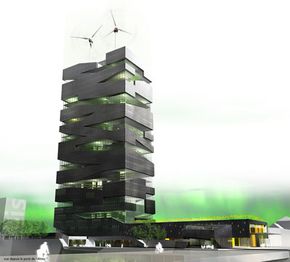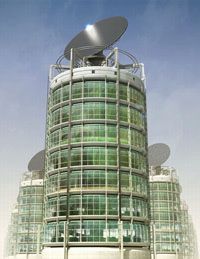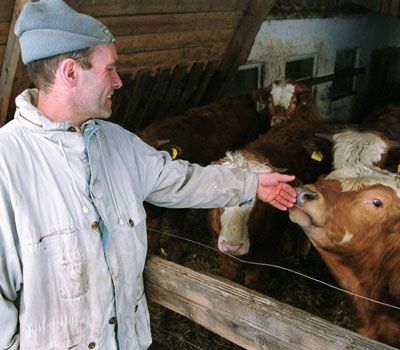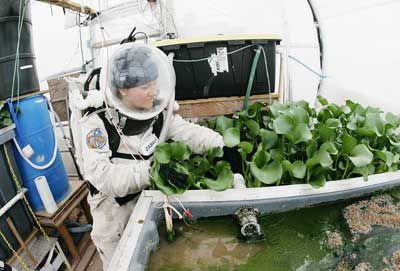Most vertical farm designs depict them as ultra-modern, stylish skyscrapers, 30 to 40 stories tall. Each floor could potentially feature a variety of crops and small livestock. Tanks would house fish and other seafood.
Using technology to minimize waste and energy use, and to facilitate recycling, is essential.
To that end, they would contain glass walls, large solar panels, high-tech irrigation systems and incinerators that burn waste for energy. A variety of monitoring systems would ensure that energy and water go where they need to go and that temperature controls are carefully maintained.
Water and Gas Management
We would carefully distribute water through irrigation and collect and recycle any excess water. Through evaporation, we can collect dew.
We can clean sewage, also known as "black water," with algae and plants and made potable. Or we can treat them with filters and make it into "gray water," which is sterile and useable for irrigation. Cities dump billions of gallons of gray water into rivers every day.
We would collect methane gas, instead of letting it escape into the atmosphere. And we can sell any excess excess energy back to the local energy grid.
Dr. Despommier believes that 150 30-story farms could feed all of New York City. Elegantly designed, these vertical farms appear at strategic locations around a city or clustered together in a nearby development (in the case of New York City, possibly on Governor's Island). They would remain unobtrusive, or even pleasant to the eye.
Socioeconomic Impact
For vertical farming to be possible, experts from a variety of disciplines — including agriculture, agronomy, civil planning, architecture, engineering, economics and public health — have to come together.
But we're not starting from scratch.
Dr. Despommier and others have published studies describing plans for the development and implementation of vertical farms. In fact, all of the technology behind vertical farming already exists, though it could take up to 10 years to figure out how to make these technologies work together.
Even so, we already grow plants through hydroponic farming (without soil) in extreme environments and on space ships. Biomass, methane collection and waste-water collection are becoming essential tools of conservation.
Some criticize vertical farming because it would eliminate the jobs of conventional farmers and those who transport and package their goods. To those critics, one could point out that 95 percent of Americans were farmers before the Industrial Revolution, and this might simply be the next step in that evolution.
But it's also the contention of Dr. Despommier that vertical farming would create jobs.
Thousands of people would need to develop, build and maintain these systems. The socioeconomic impact could be immense, especially for those who struggle as subsistence farmers or in abject poverty.
In the developing world, the presence of a dependable food supply and improved nutrition would raise standards of living, allow the development of commerce and shift children away from agricultural work and into schools.



